Published March 5, 2024 | Last update October 10, 2025 | 10 models online
Toyota was reasonably successful in the last part of the Group C era. The 3-liter TS010 (1992) and turbo-charged 94C-V (1994) both finished on the podium at Le Mans, without winning however. When the set of regulations changed towards GT1, Toyota saw new possibilities.
1995 Le Mans 24h, SARD MC8-R Toyota. The first attempt was with this SARD MC8-R. With support from Toyota, Sigma Advanced Research Development (SARD) built a Lexus V8 turbo engine in a small Toyota MR2. Of course they had to redesign the entire car, enlarging its wheel base by 40 cm and many other things. It became a new car with a new name and homologation. The clutch could not handle the power of the V8 and the car retired after only 14 laps.
#26 Alain Ferté (F) / Kenny Acheson (GB) / Tomiko Yoshikawa (J) – DNF
SARD MC8-R (Toyota MR2) – 4.0 liter Lexus (Toyota) V8 90° turbo, approx. 550 hp. Dunlop tires. Weight 1270 kg. Steel monocoque, chassisnr. SARD #001

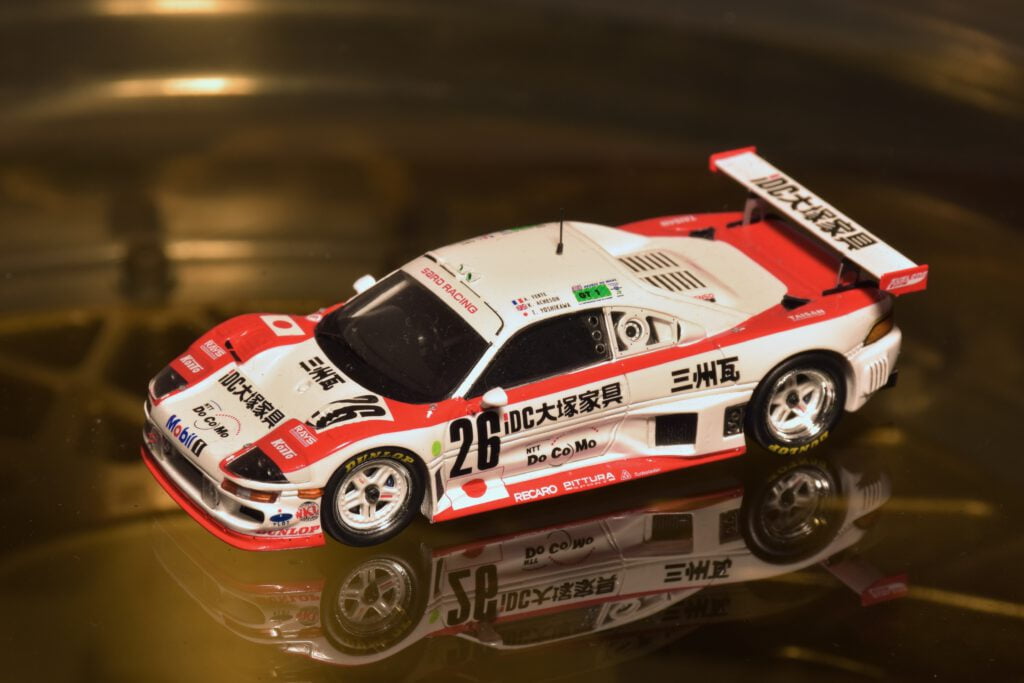
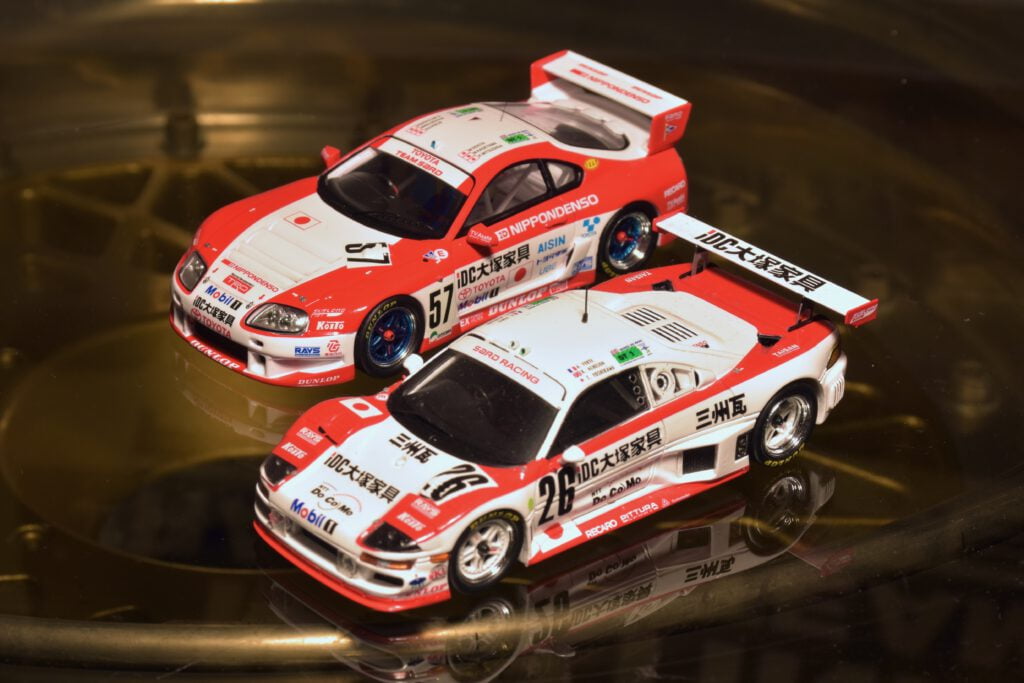
- SPARK S4451 (resin)
- Overall rating: 4 STARS | Quality details: 4 STARS | Estimated value: 4 STARS
Toyota also tried its luck with a Supra, these were very successful in the Japanese GT Championship, such as this Castrol version.
JGTC Sendai 1995 #36 Michael Krumm (D) – 1st

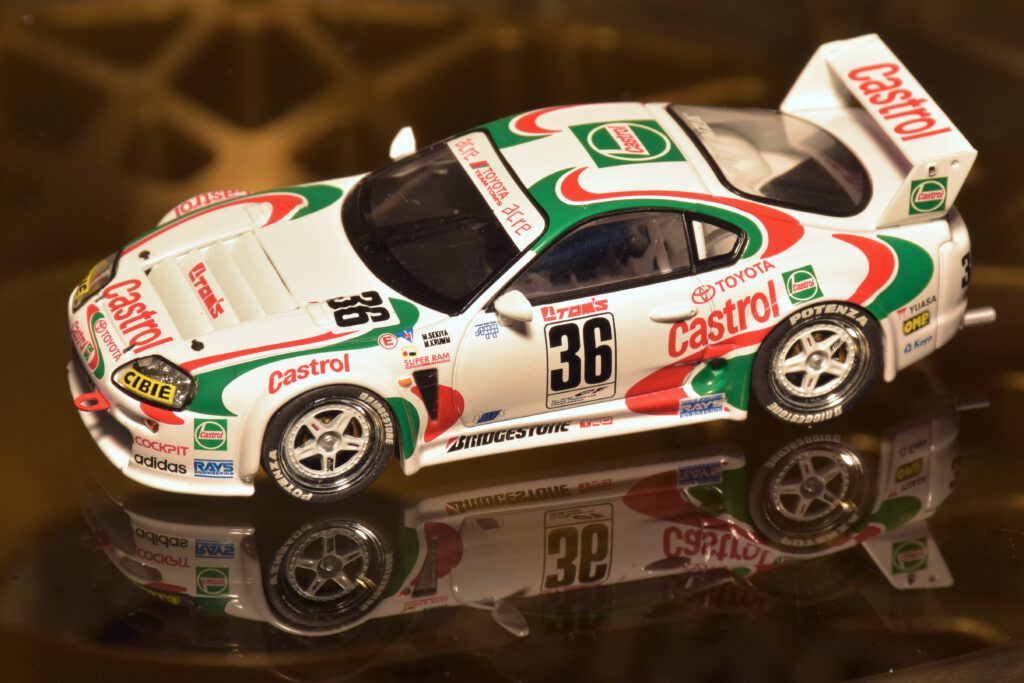
- EBBRO 43976 (resin)
- Overall rating: 5 STARS | Quality details: 5 STARS | Estimated value: 5 STARS
1996 Le Mans 24h, Toyota Supra. Toyota brought a JGTC Supra that was adapted to GT1 regulations to Le Mans. It had a 4-cylinder 2.1-liter engine that had been used in Group C some years ago. The car lacked top speed compared to the McLarens and was 10 seconds a lap slower. The car retired after a crash.
#57 Masanori Sekiya (J) / Masami Kageyama (J) / Hidetoshi Mitsusada (J) – DNF
Toyota Supra LM – 2.1 liter Toyota 3S-GE straight-4 turbo, approx. 600 hp. Dunlop tires. Weight 1245 kg. Steel monocoque, chassisnr. JZA80 #004
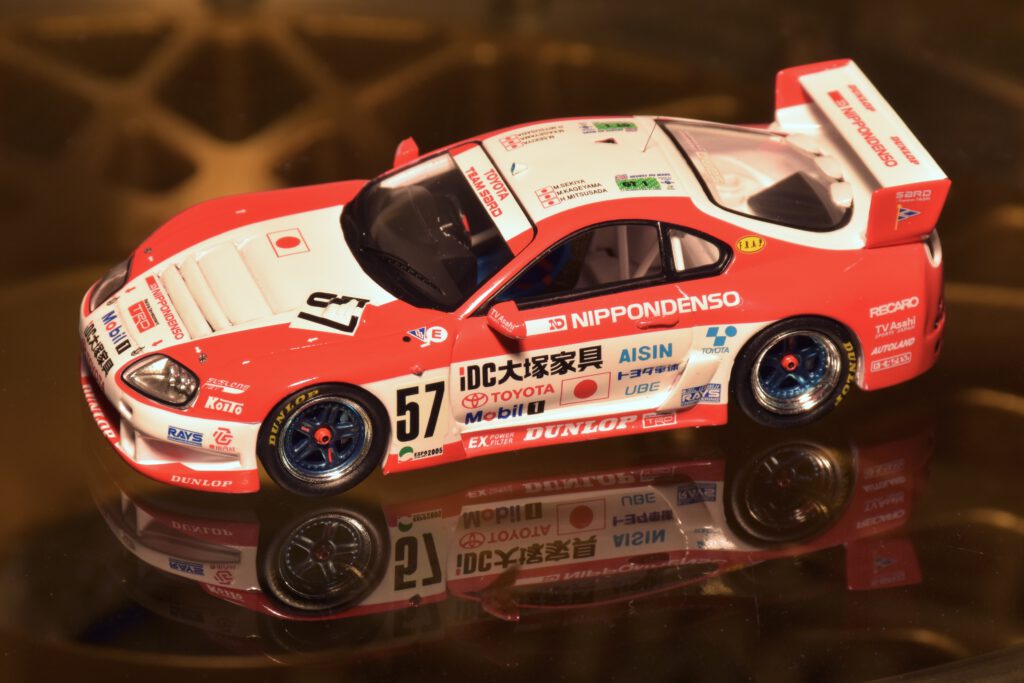
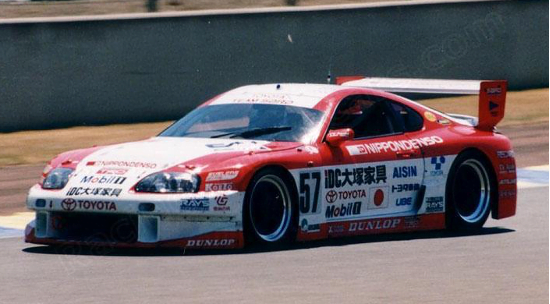
- SPARK S2388 (resin)
- Overall rating: 4 STARS | Quality details: 4 STARS | Estimated value: 4 STARS
Toyota TS 020
1998 Le Mans 24h, Toyota GT-One. In 1998 many manufacturers brought homologation specials of their GT1’s to Le Mans such as Porsche 911 GT-98, Nissan R390, Mercedes CLK-LM and the Panoz GTR-1. So did Toyota; the Japanese developed the GT-One which is also known as the TS 020. It was a very serious attempt, the car was designed by André de Cortanze, the carbon fibre monocoques were built by Dallara, had 3.5 liter V8 twin-turbo engines and used Michelin tires. The number 27 with their hll-Japanese crew started 8th and finished only 9th and was the only GT-One that reached the finish.
#27 Ukyo Katayama (J) / Keiichi Tsuchiya (J) / Toshio Suzuki (J) – 9th
Toyota GT-One – Toyota RV36V-R V8 90º twin turbo, approx 600 hp. Michelin tires. Weight 900 kg. Carbon + aluminum monocoque, chassisnr. TMG / Dallara TS020 #LM805

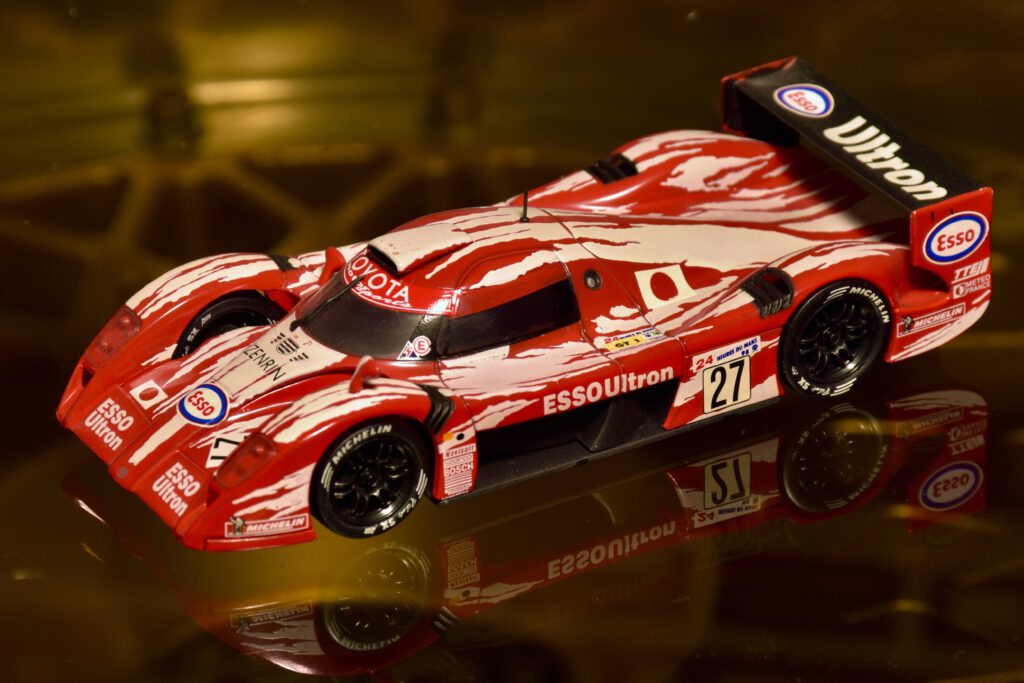
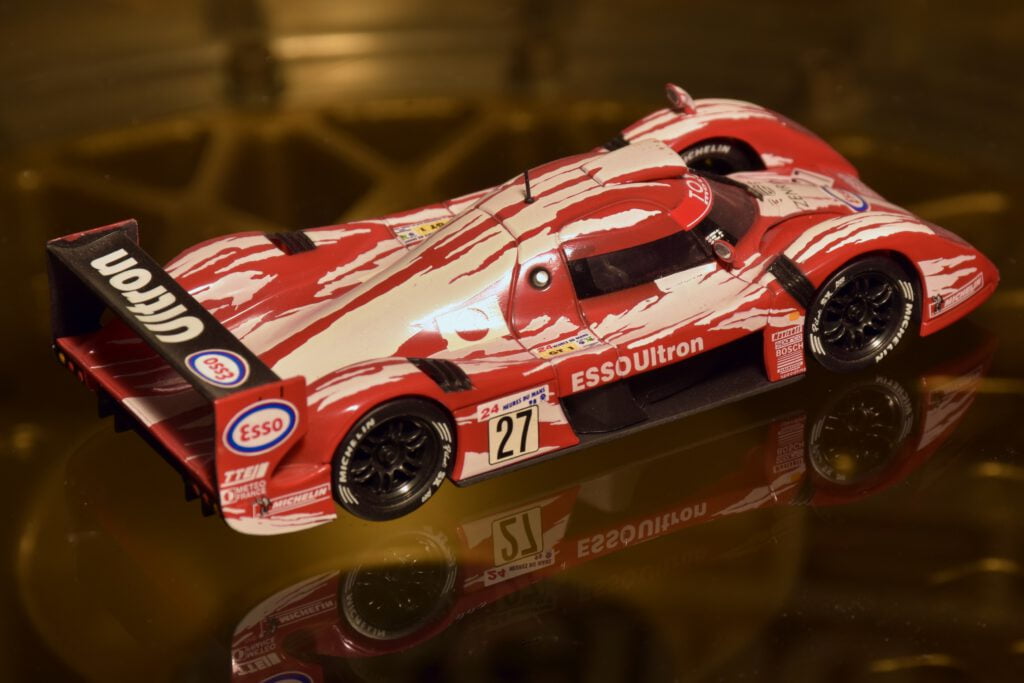
- ONYX XLM 99005 (diecast)
- Overall rating: 4 STARS | Quality details: 3 STARS | Estimated value: 3 STARS
1998 Le Mans 24h, Toyota GT-One. Martin Brundle qualified the #28 Toyota at the front row and the team held the lead for about three hours. It was Brundle who crashed the car early on Sunday morning and had to retire the car after that. It was also Martin Brundle who set the fastest lap of the race.
#28 Martin Brundle (GB) / Emmanuel Collard (F) / Eric Hélary (F) – DNF
Toyota GT-One – Toyota RV36V-R V8 90º twin turbo, approx 600 hp. Michelin tires. Weight 900 kg. Carbon + aluminum monocoque, chassisnr. TMG / Dallara TS020 #LM804
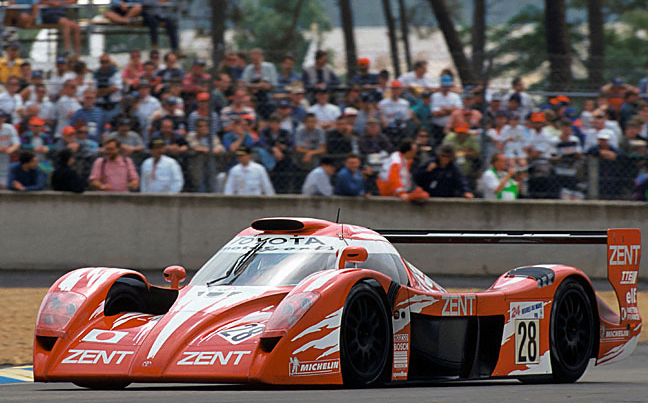
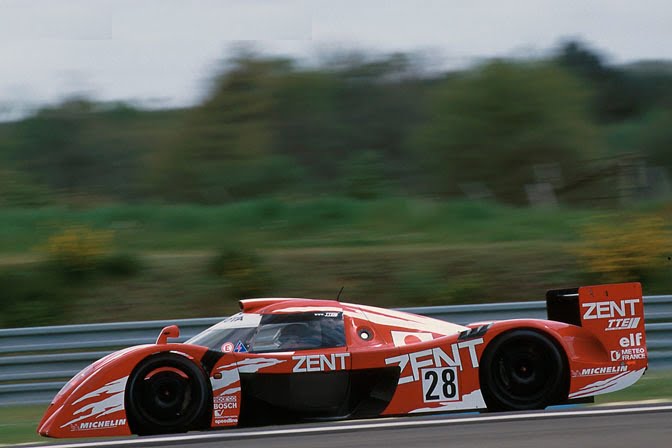

- ONYX XLM 99006 (diecast)
- Overall rating: 4 STARS | Quality details: 3 STARS | Estimated value: 3 STARS
1998 Le Mans 24h, Toyota GT-One. The #29 car took the lead over from the #28 at nightfall. It had some mechanical problems and lost the lead, but got it back when the leading Porsche had troubles also. With just over an hour to go, the gearbox of the Toyota seized and the team retired, handing a double win to Porsche.
#29 Thierry Boutsen (B) / Ralf Kelleners (D) / Geoff Lees (GB) – DNF
Toyota GT-One – Toyota RV36V-R V8 90º twin turbo, approx 600 hp. Michelin tires. Weight 900 kg. Carbon + aluminum monocoque, chassisnr. TMG / Dallara TS020 #LM802
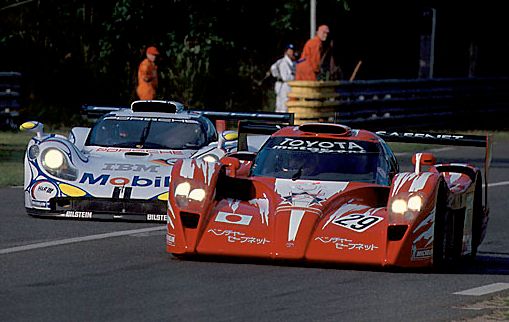

- ONYX XLM 99007 (diecast)
- Overall rating: 4 STARS | Quality details: 3 STARS | Estimated value: 3 STARS
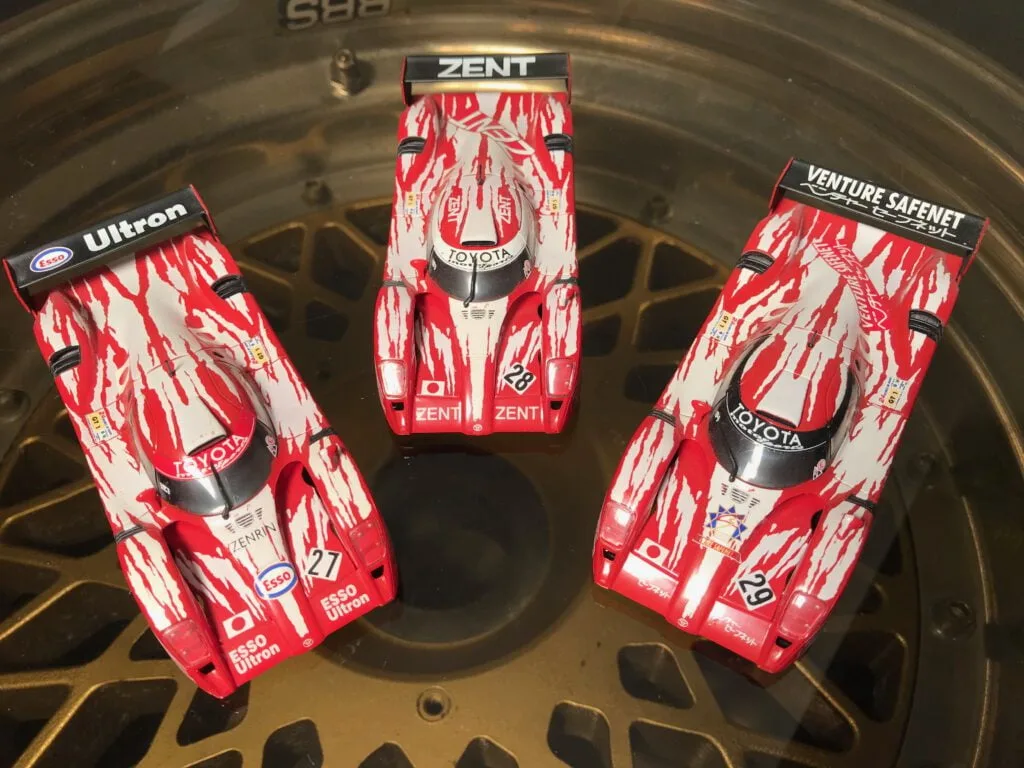
1999 Le Mans 24h, Toyota GT-One. The regulations for 1999 changed again. The manufacturers destroyed the GT1 concept of road based cars with their homologation specials. So now these cars were obliged to run in GTP where there was no need for a series production car before one was allowed to race it. Toyota upgraded their GT-Ones to LMGTP and so did Mercedes with CLR that replaced the CLK. Nissan, Panoz and BMW chose to enter open top sports cars with less restrictions and Audi was new to Le Mans, entering both closed LMGTP and open LMP. Again, Toyota was the fastest car, the #1 and #2 shared the front row and #1 led the race for a while until a crash after a puncture damaged the car too much.
#1 Martin Brundle (GB) / Emmanuel Collard (F) / Vincenzo Sospiri (I) – DNF
Toyota GT-One – Toyota RV36V-R V8 90º twin turbo, approx 600 hp. Michelin tires. Weight 900 kg. Carbon + aluminum monocoque, chassisnr. TMG / Dallara TS020 #LM907

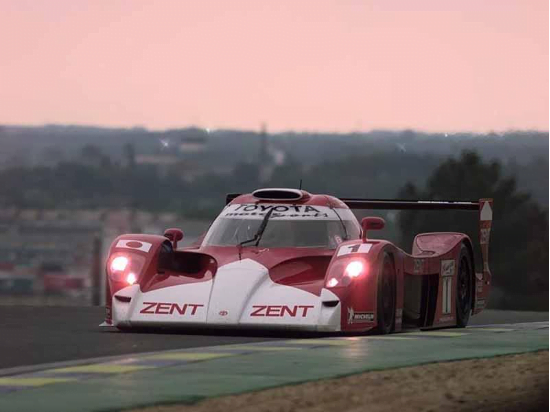
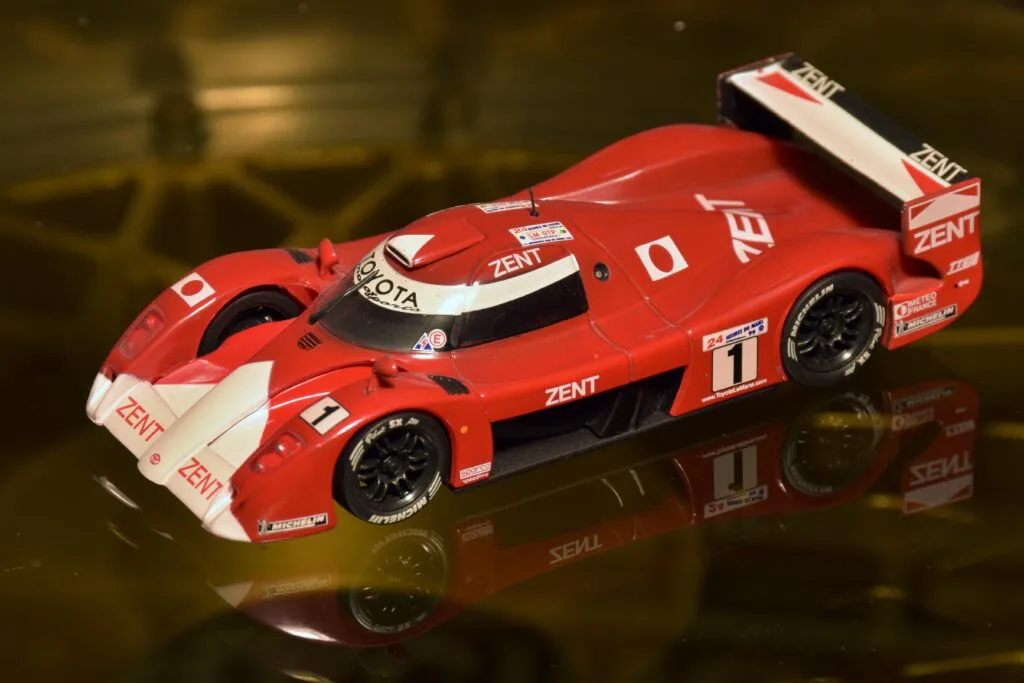
- ONYX XLM 99016
- Overall rating: 3 STARS | Quality details: 3 STARS | Estimated value: 3 STARS
1999 Le Mans 24h, Toyota GT-One. The #2 Toyota was in a fight for the lead with both Mercedes and one of the BMW’s. The Mercedes got famous by flying off the track literally and the #1 Toyota also crashed, leaving the win for BMW. Again the third Toyota with the Japanese drivers was the only surviving Toyota in second place.
#2 Thierry Boutsen (B) / Allan McNish (GB) / Ralf Kelleners (D) – DNF
#3 Ukyo Katayama (J) / Keiichi Tsuchiya (J) / Toshio Suzuki (J) – 2nd
Toyota GT-One – Toyota RV36V-R V8 90º twin turbo, approx 600 hp. Michelin tires. Weight 900 kg. Carbon + aluminum monocoque, chassisnr. TMG / Dallara TS020 #LM806 & #LM804
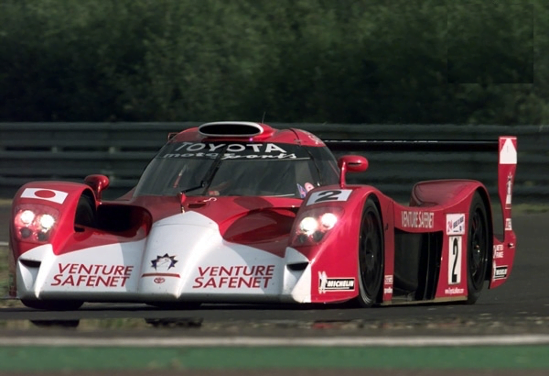
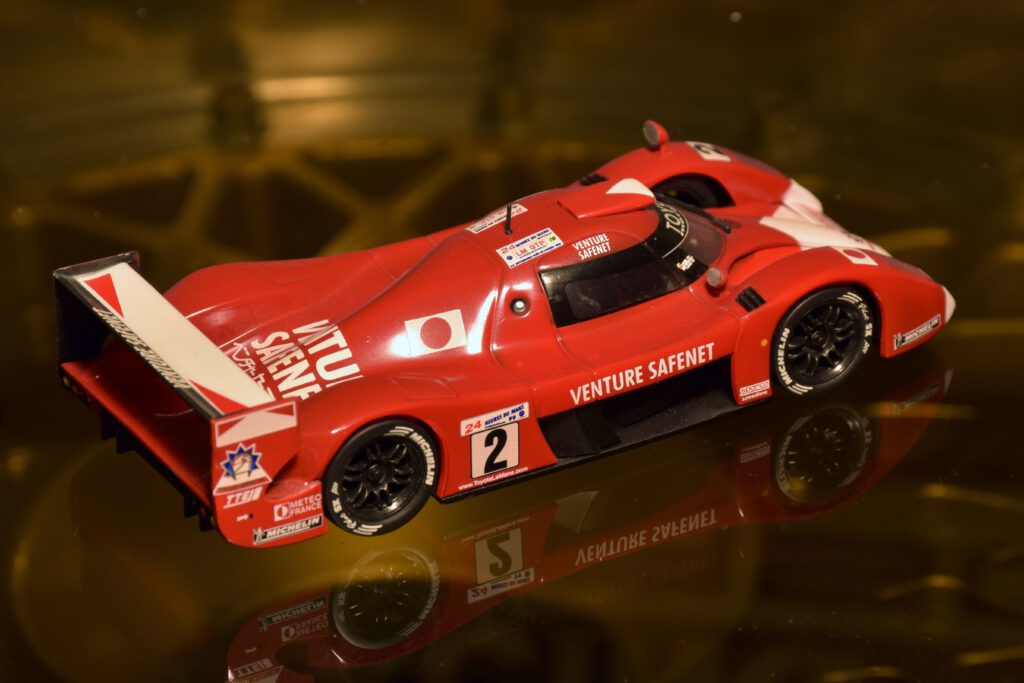
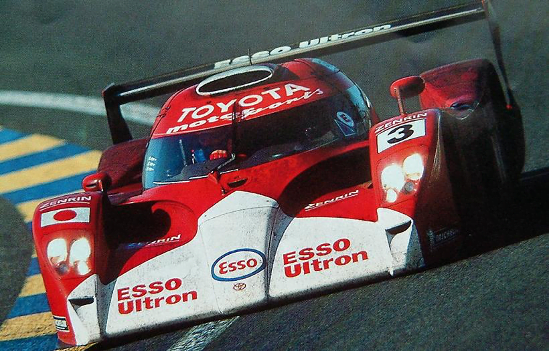
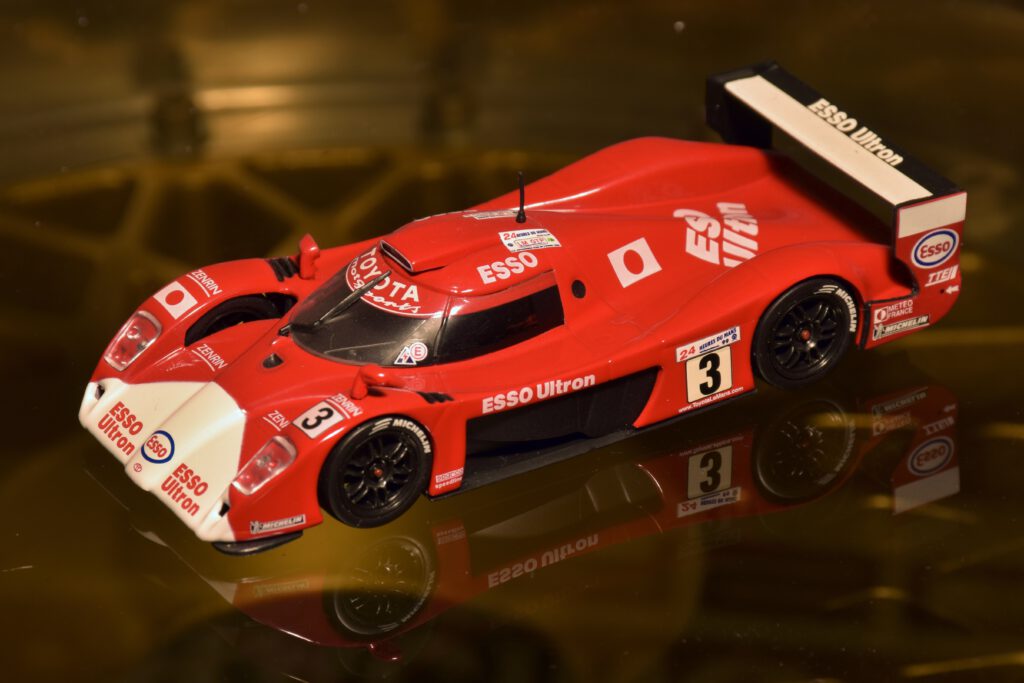
- ONYX XLM 99017 (#2)
- Overall rating: 3 STARS | Quality details: 3 STARS | Estimated value: 3 STARS
- ALTAYA 24 hours du Mans 5 (#3)
- Overall rating: 3 STARS | Quality details: 3 STARS | Estimated value: 2 STARS
The fastest car that never won …
1999 Fuji 1000km, Toyota GT-One. Outside Le Mans, the GT-One drove just one other race; one car was entered in GTP for a non-championship at Fuji in November 1999. It was the last race for the TS 020 as its official name was and however it was fastest again, it finished second in the race. The GT-One retired as the fastest sports car of its era that never won a race.
#1 Ukyo Katayama (J) / Keiichi Tsuchiya (J) / Toshio Suzuki (J) – 2nd
Toyota GT-One – Toyota RV36V-R V8 90º twin turbo, approx 600 hp. Michelin tires. Weight 900 kg. Carbon + aluminum monocoque, chassisnr. TMG / Dallara TS020 #unknown

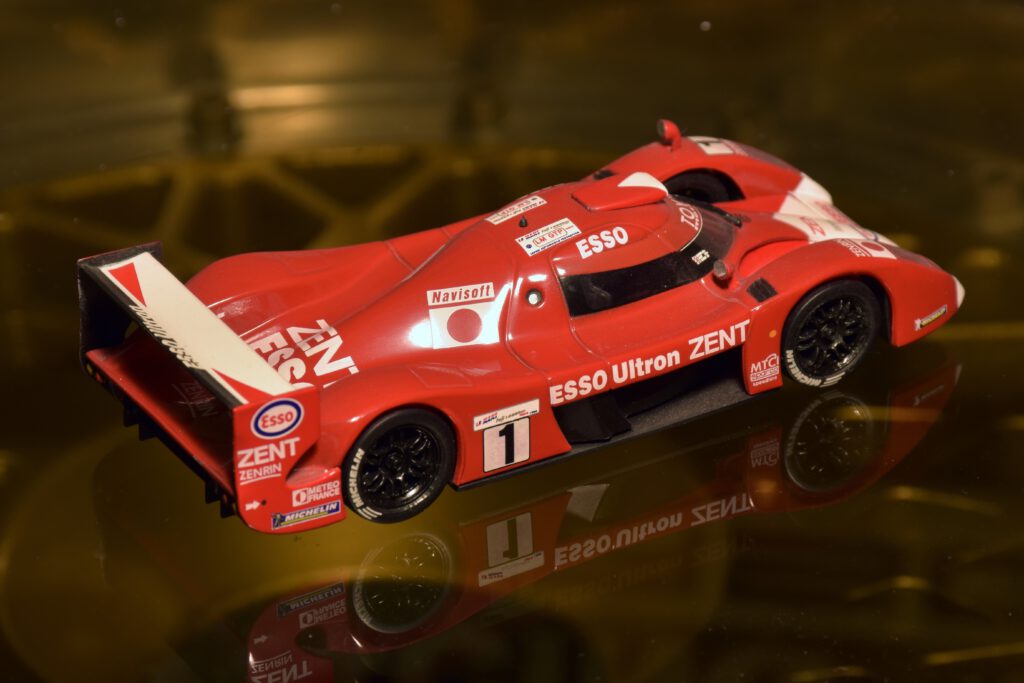
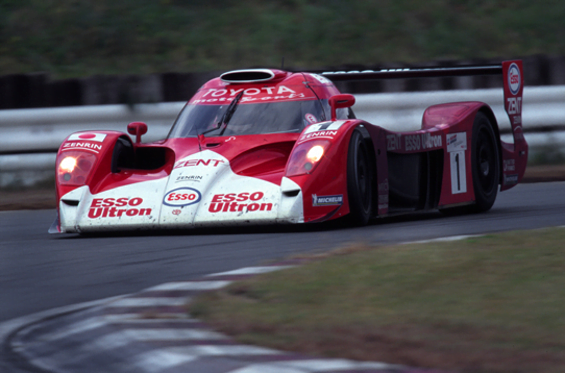
- ONYX XLM #99010
- Overall rating: 3 STARS | Quality details: 3 STARS | Estimated value: 3 STARS
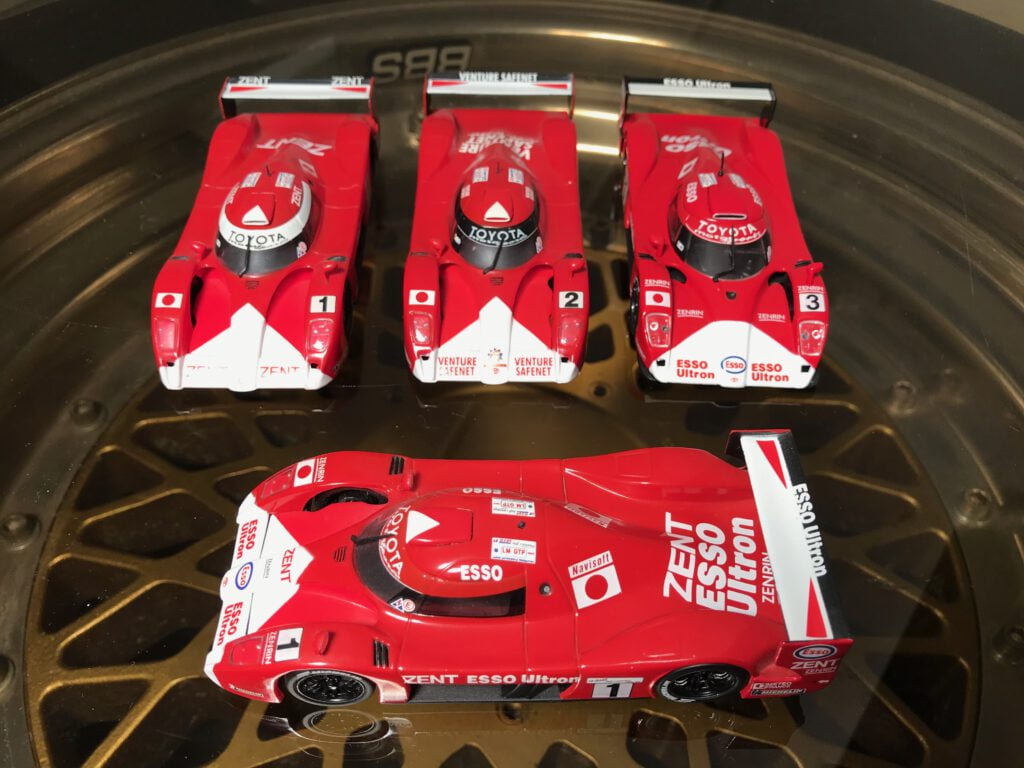
Thanks for visiting 🙂
